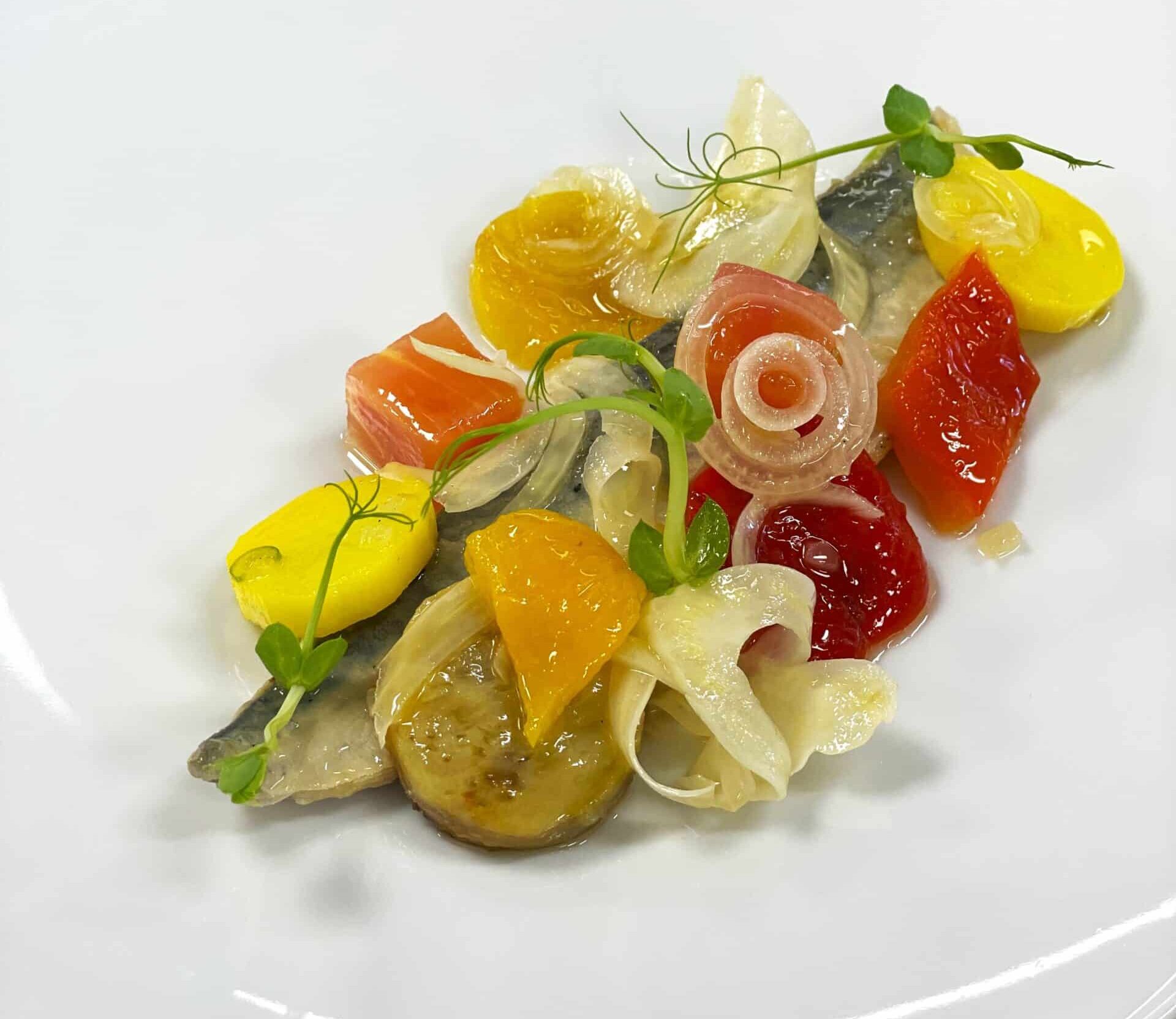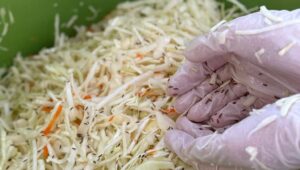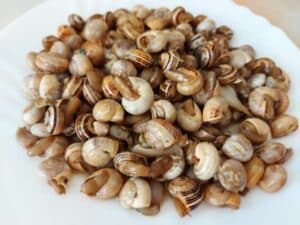On a hot summer day, a zingy vinegar-soaked ‘escabeche’ might be everything one needs to rustle up an impressive lunch or dinner.
Often associated with Spain, this low-effort but high-reward technique has travelled as far as Peru and the Philippines, and has managed to make a culinary impact on neighbouring Portugal, France and Italy.
Escabeche is one of many Spanish delicacies, such as salt-cured jamón ibérico or anchovies, that survived the centuries for its extraordinary power to create and preserve deliciousness.
The term and the technique were brought to Spain in the eighth century by the Moors. Escabeche derives from the Arabic al-sikbaj, where sikbaj refers to “a vinegar stew”. Its medieval version involved lamb in a sweet and sour sauce, usually cooked with vinegar and honey or date molasses.
In essence, escabeche is a hot marination and preservation technique. It does not cook ingredients in the classical sense (by the application of heat), but rather transforms their flavour through the use of a highly acidic and flavourful bath.
There are several fundamental requirements to the process. Firstly, to use copious amounts of vinegar to prepare the bath. Secondly, to cook the main ingredient(s) before treating them to the bath. Thirdly, to allow plentiful time for ingredients to enjoy the escabeche treatment and develop flavour.
Virtually any kind of protein can be marinated escabeche style; thus, chicken, rabbit, mussels, octopus, sardines, or mackerel, you name it, have all been subjected to escabeche at some point. Vegetables have also joined the party and are either used to complement proteins or as a separate dish. The usual suspects are peppers, eggplants, tomatoes, fennel, onions, asparagus, artichokes and potatoes.
To experiment with escabeche, consider doing the following. Begin by choosing ingredients that you would like to prepare escabeche style. Then, all proteins must be cooked. Vegetables can be left raw if they can be consumed raw, otherwise they must be cooked too. For example, tomatoes can be simply sliced, green beans should be blanched, and potatoes should be boiled. The ingredients are then combined in a dish, waiting for the marinade.
The escabeche marinade always includes vinegar, which is then diluted with olive oil, white wine and even broth for the sake of palatability. The marinade proportions that have worked for me call for 100ml olive oil, 200ml of cider vinegar and 500ml white wine, which seems sufficient to cover about six fillets of small-medium fish (like red mullet, mackerel, sardines) together with some vegetables.
The flavour of the marinade is further enhanced with the aromatics, which range from such classical inclusions as a bay leaf and allspice, to a cinnamon stick, cumin, citrus peel, lemon and other things as one’s heart desires.
To prepare the marinade, combine the liquid ingredients in a saucepan and bring them to an active simmer, no need to boil it long and hard. Take off the heat and add aromatics. Some aromatics can lose their flavour potency if boiled, hence they are added afterwards. Lastly, submerge your ingredient(s) into the marinade, and leave to infuse in a refrigerator for 24 hours. When ready, take out the ingredients and discard the liquid. Enjoy the fruits of your labour on top of salads and pasta, in sandwiches, or simply straight up on a toasted baguette. Yummy!
By Dr. Irina Mikhailava
|| features@algarveresident.com
Dr. Irina Mikhailava, a chef and a good food champion, happily residing in the Algarve and eating all over the world with an appetite for learning, sharing and writing. Instagram: incompanyoffood


























